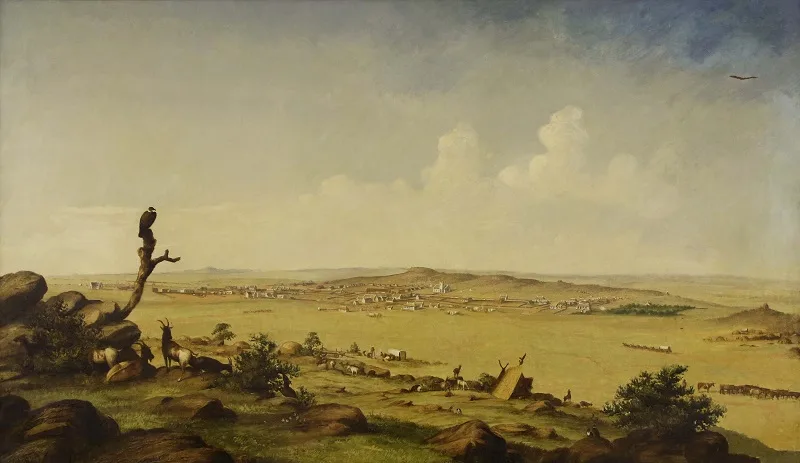The Oliewenhuis Art Museum has meticulously curated an exhibition from its permanent collection, offering a captivating glimpse into the remarkable diversity of South African visual art. Ester le Roux, the museum’s curator, emphasizes that the exhibition, titled “Creatively Contrasted: New Views on the Permanent Collection,” underscores the institution’s dedication to cultivating a comprehensive representation of South African visual art.

Le Roux explains that the curators thoughtfully selected artworks with contrasting aspects to provide a fresh perspective and honour the extraordinary richness of South African visual art. The collection includes the oldest and newest pieces.
The museum’s initial acquisition, Rorte Berner’s “Das Kranke Kind” (1981), received in 1990, marked the commencement of its collection. Noteworthy acquisitions from Gallery 21 in Johannesburg include Norman Catherine’s “Ritual” (1985), a pastel on paper, Eduardo Villa’s “Torso” (1968), a bronze statue, and Ezrom Lagae’s “Head of a Wise Man,” also in bronze.

Le Roux details that the oldest artworks in the collection consist of three oil-on-canvas paintings by Thomas Baines. “Bloemfontein about 1850,” donated by the Bloemfontein Municipality in 1990, showcases the city’s history. Another piece, “Bloemfontein vanaf Naval Hill 1851,” donated by the municipality, features a bag with a linen piece inscribed with historical details. In 1924, the donor gifted “Uitsig oor Bloemfontein 1850,” a painting on sturdy striped fabric Ticking, which is traditionally used for pillows and mattresses.
Highlighting recent acquisitions, Le Roux mentions works by living legends Mam Noria Mabasa and Dr. Esther Mahlangu. The art collection acquired “Born from Fire,” a sculptural masterpiece by Mam Noria Mabasa, in 2019, and added Dr. Esther Mahlangu’s “Ndebele Abstract” to the collection in 2021.

The exhibition also showcases the works of Stefan Ampenberger and his wife Iris Ampenberger, who became friends with the renowned artist Father Frans Claerhout. Stefan painted landscapes, while Iris focused on portraits. On display are four portraits, including one of Father Frans Claerhout and two of Stefan, along with a self-portrait by Iris.
Le Roux underscores the inclusion of contrasting artworks, such as the largest and smallest pieces, as well as collaborations between multiple artists, encouraging visitors to explore and appreciate the rich and diverse visual art history of South Africa and learn about the nation’s heritage.
The exhibition is open for viewing until March 3rd at the Oliewenhuis Art Museum, located at 16 Harry Smith Street.


